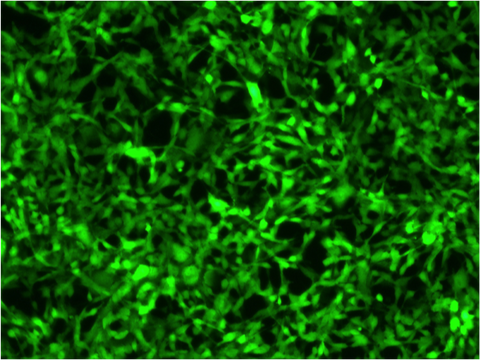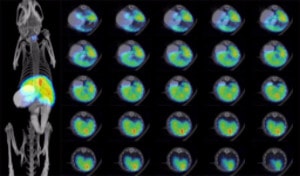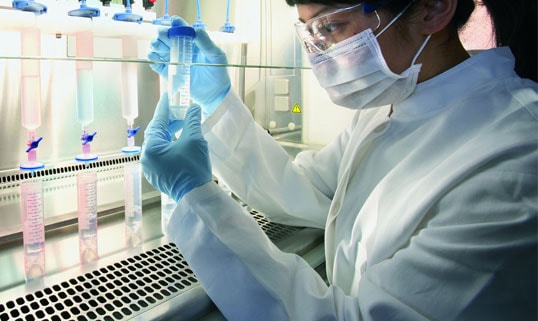Fluorescent Proteins
pLV-SFFV-eGFP starting at $ 1,250
pLV-SFFV-eGFP-P2A-humanNIS starting at $ 1,500
pLV-SFFV-eGFP-PGK-Puro starting at $ 1,250
pLV-SFFV-humanNIS-P2A-eGFP-T2A-Luc2 starting at $ 1,500
pLV-SFFV-dsRed starting at $ 1,250
pLV-SFFV-dsRed-PGK-Puro starting at $ 1,250


Description
Fluorescent proteins are optical reporters that, following excitation by an appropriate wavelength of light, emit light at a specific wavelength. Green fluorescent protein (GFP) is the most commonly used fluorescent reporter. Initially isolated from the jellyfish Aqueoria victoria, GFP has since been engineered to generate the brighter and more photostable enhanced GFP (eGFP), with an excitation wavelength of 488 nm and emission wavelength of 509 nm. Additional mutations of GFP have produced fluorescent proteins emitting different colors of light including yellow, cyan, red (DsRed), and ultraviolet.
The light emitted by fluorescent proteins can be used to image cells or viruses by conventional or intravital microscopy. Noninvasive optical imaging of fluorescent proteins in mice is hampered by tissue autofluorescence, which makes this type of imaging impractical. Microscopic analyses of fluorescent protein signal in post-mortem samples, however, is frequently used to verify the results of noninvasive imaging using different reporters.
How to use fluorescent proteins for imaging
Reagents: imaging fluorescent proteins requires no additional reagents, other than what may be needed to prepare post-mortem samples for microscopy.
Equipment: fluorescent proteins can be imaged using a conventional fluorescent microscope or an intravital microscope. It is important to confirm that the microscope to be used has an excitation laser and emission filter combinations that will work for the fluorescent protein of choice.
- eGFP: excitation = 488 nm/emission = 509 nm
- DsRed: excitation = 558 nm/emission = 583 nm
Workflow:


